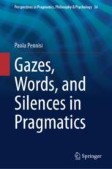Search
Search Results
-
The Place of a Lingua Franca in Development Practice: The Case of Tok Pisin in Papua New Guinea
Tok Pisin has a role in development work in Papua New Guinea (PNG), because of its importance in the linguistic landscape of the country. PNG’s...
-
The Importance of Mutual Understanding of Key Terminology in Development Projects: A PNG Example
The use of local language in development projects contributes to better development outcomes for participants and future generations of the target...
-
Lost in Translation: Disorienting Research Dilemmas in a Multilingual Country
Pamphilon analyses how a series of field events in multilingual Papua New Guinea challenged her notions of research for development ‘good practice’....
-
Language Contact and Language Change in the Sepik Region of New Guinea: The Case of Yalaku
Yalaku is one of the smallest members of the Ndu language family of the Sepik region of New Guinea. Spoken in a hilly area off the Sepik river,...
-
Balancing the Local with the Universal: Minimal English and Agricultural Training in the Pacific
Minimal English includes semantic primes, other easy-to-translate words and words that are important in a specific culture. In Pacific countries like...
-
Introduction: What Can Linguistics and Language(s) Contribute to Development Practices?
Language use and language choice play a crucial role in achieving development goals and in development work. This chapter calls for a deeper...
-
Methodology
This chapter is concerned with methodology. Section 4.1 is a description of the language sample and the data source of the study. We established a...
-
Peer-To-Peer Learning: The Dynamics of Kin Relations, Matriliny, and Gender
A peer-to-peer model of learning has been promoted as an appropriate model of informal adult learning in the Pacific. This chapter discusses the...
-
On Patterns of Conceptual Construal in Tok Pisin
As a creolized variety of Melanesian Pidgin English spoken in Papua New Guinea, Tok Pisin has a simplified grammar and a reduced lexicon. In spite of...
-
A case for a binary feature underlying clusivity: the possibility of ABA
This paper reevaluates claims about the status of inclusive pronouns and introduces a new database of pronominal morphology. There are conflicting...

-
The Linguist, Language, and Economic Development: A Commentary on Languages, Linguistics and Development Practices
The contributors to this volume promote collaboration between agents of economic development and linguists and/or locals who can bridge competently...
-
Different Sources, Same Path—From Addressee-Based Deictics to Markers of Discourse Status
Saliba-Logea, an Oceanic language of Papua New Guinea, has two types of spatial deictics: directionals and demonstratives, which both make a spatial...
-
“¡Amo kitlapanas tetl!”: Heritage Language and the Defense Against Fracking in the Huasteca Potosina, Mexico
In this chapter I explore the relationship between language and environment loss and the use of heritage languages in resistance related to the...
-
Introduction
This introductory chapter presents the reader with those initial ideas that led to the development of the manual and establishes the structure that...
-
Societal Multilingualism
After having covered the individual side of multilingualism, and in particular the questions “When is a speaker multilingual?” (► Chap....
-
On von Stechow’s “Comparing Semantic Theories of Comparison”
The syntax and semantics of expressions used to represent comparison is a central topic in linguistic theory. Arnim von Stechow was interested in how...
-
Multilingualism Between Identities, Ideologies, and Language Policies
This chapter discusses multilingualism in the context of speaker identities and attitudes, and in the light of societal contexts in which the...
-

-
The Communicative Eyes
With our eyes we usually transmit two types of information: information concerning our mental states (emotions, intentions, etc ...) and information...
-
Prospects for Translingual Pedagogy in MTB-MLE
This chapter considers the prospects of employing translingual pedagogy as a more appropriate approach in carrying out Mother Tongue...
